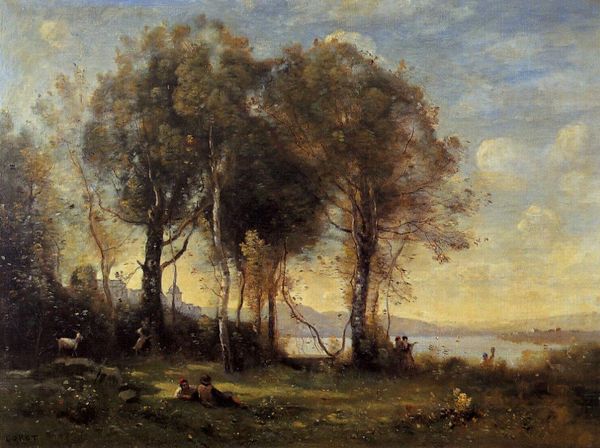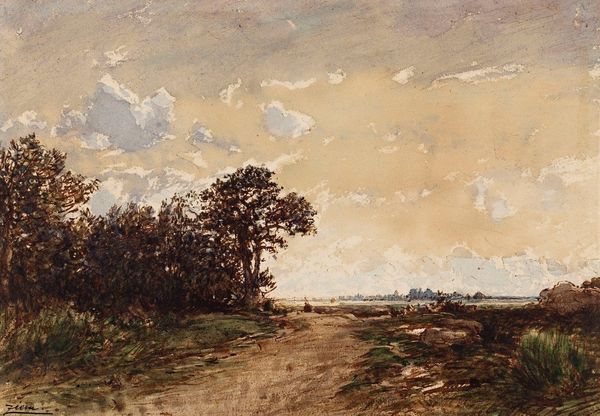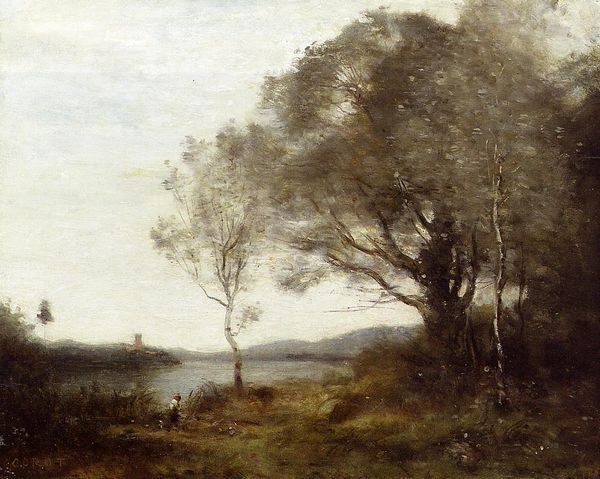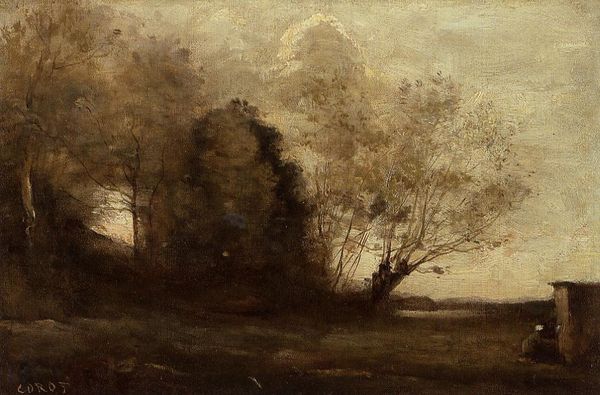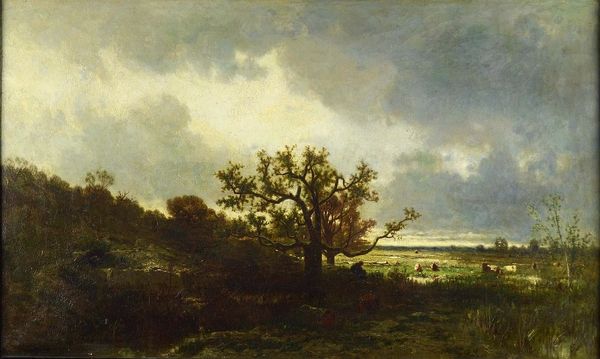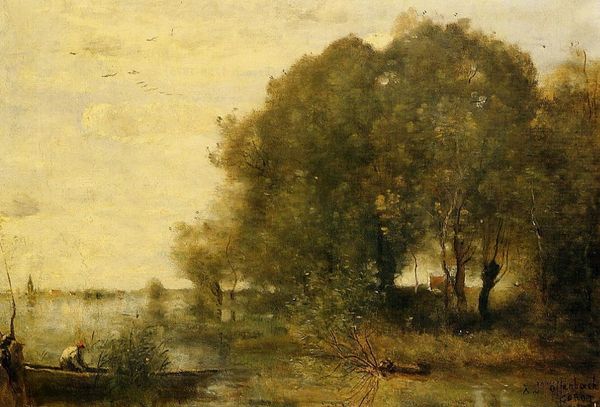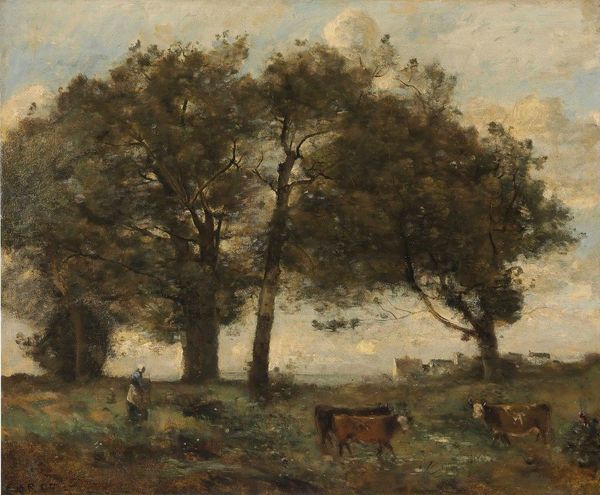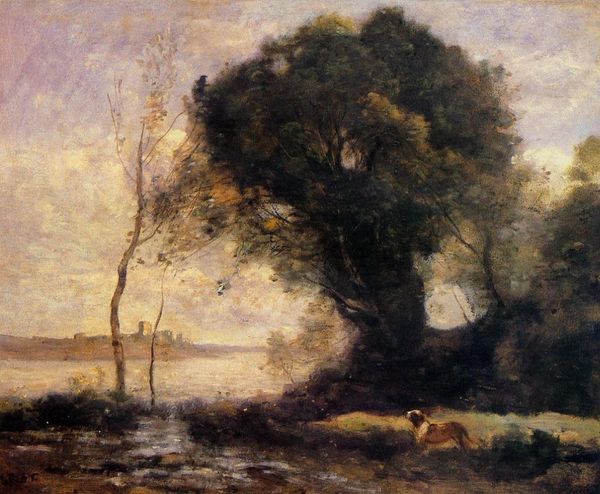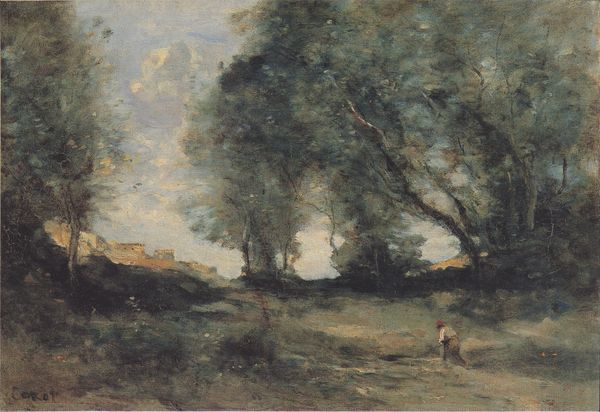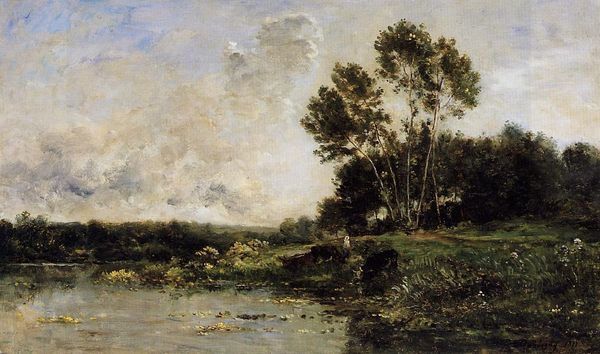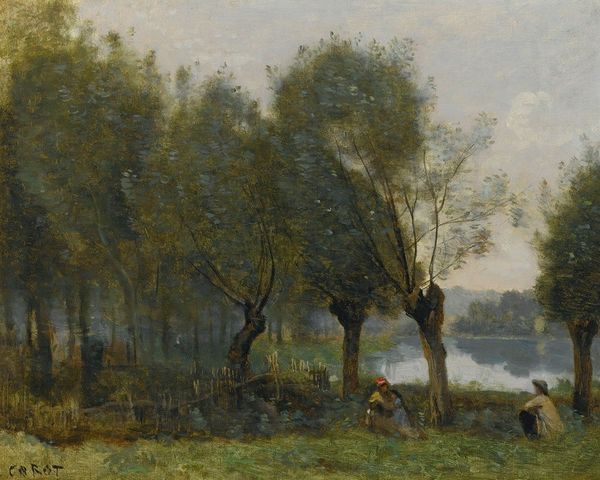
Copyright: Public domain
Curator: What a muted palette, almost monochrome, but compelling nonetheless. It projects such stillness. Editor: Indeed. We are looking at “The Bay of Somme,” an oil painting by Camille Corot, dating from around 1860. I find its engagement with labor fascinating, considering it seemingly depicts a pastoral scene. Curator: I see the seeming embrace of nature, but there’s something subtly disruptive about this work that needs unpacking. Are we really seeing a glorification of rural idyll, or is something more nuanced at play? I keep looking at the figures, obscured at the painting's right; they suggest something, perhaps a resistance to dominant narratives. Editor: Precisely. The placement of the human figures – they appear to be fisherfolk perhaps? – raises important questions about their relationship to the landscape and to the means of production. This wasn't simply about aesthetics for Corot; the work touches on the materiality of rural life, how people lived and worked within their environments, manipulating materials around them. Consider his application of paint, capturing not just form, but the inherent textures within nature. Curator: Absolutely. And it begs us to interrogate the dominant narratives of its time, reflecting class divisions. Landscape painting itself carries so much historical baggage; thinking about access to land and resources complicates any straightforward appreciation of pretty scenery. Corot's work makes me consider questions around property and privilege, especially in relation to the laboring classes of 19th-century France. Editor: And look closer, beyond the overt "natural" imagery, to how Corot treats light. There's a tactile quality, suggesting not just light, but atmosphere heavy with the possibilities and implications of working the land. One could spend hours simply studying the layering of pigments, the blending of earth tones, to evoke atmosphere and light—materials transformed through skilled human effort into meaning. Curator: It reminds us that paintings are never simply passive reflections, they are active sites of cultural production, capturing a nexus of social relations in time, in place. Editor: Yes, precisely! Next time you’re at the shore, think of Corot working, grappling with those relationships.
Comments
No comments
Be the first to comment and join the conversation on the ultimate creative platform.
